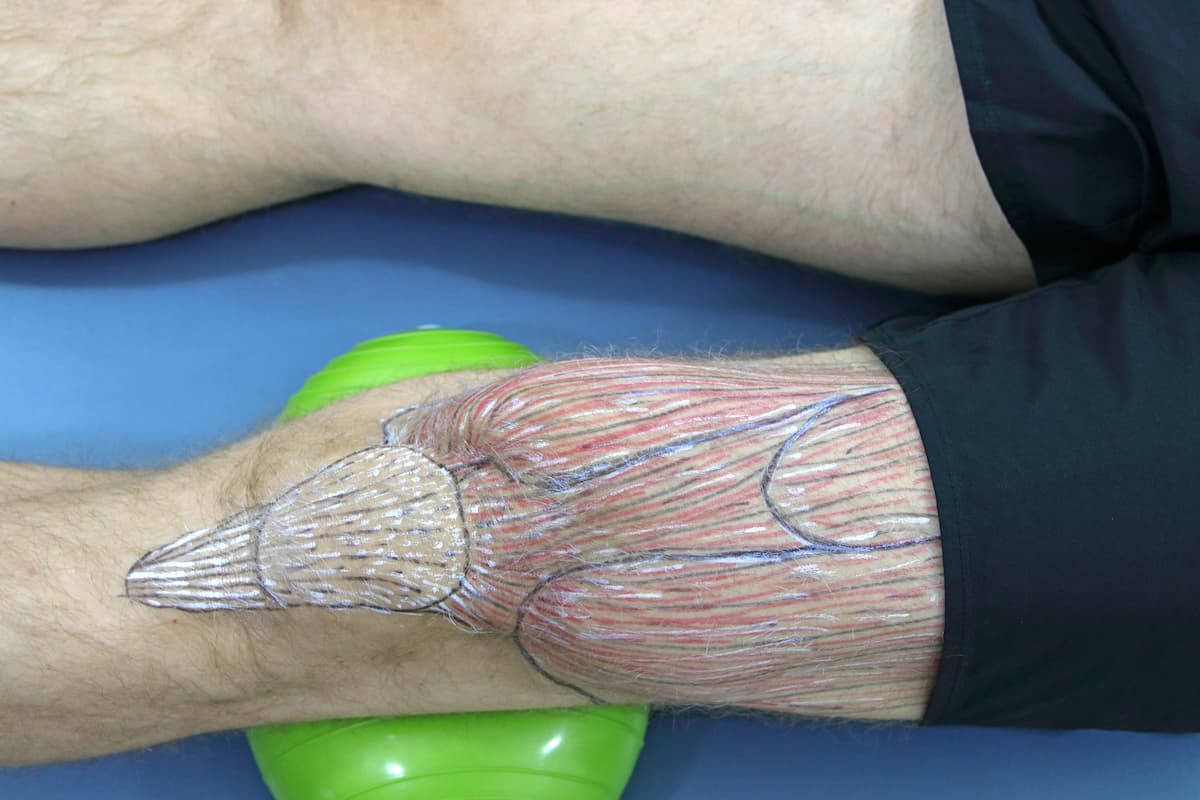The vastus medialis muscle, a crucial part of the quadriceps group, plays a vital role in knee stability and movement. Stretching this muscle is essential to maintaining lower body health and fitness, especially for athletes and individuals engaged in regular physical activity.
This comprehensive guide explores the best techniques for stretching the vastus medialis, helping promote better flexibility, reduce muscle tightness, and prevent injuries.
Understanding the vastus medialis
The vastus medialis is often noted for its significant function in knee extension and stabilization. It is one of four muscles that comprise the quadriceps group, located at the front of the thigh.
Properly functioning muscles within this group are essential, not only for athletes but for daily activities like walking, running, and climbing.
The vastus medialis is particularly important because it helps stabilize the patella (kneecap) and ensures it tracks properly along the groove of the femur during movement.
Weakness or dysfunction in this muscle can lead to knee pain and related musculoskeletal problems, making its strength and flexibility vital components of a balanced exercise regimen.
Key stretches for the vastus medialis
Several effective stretches specifically target the vastus medialis muscle. Incorporating these exercises into your routine can help improve muscle elasticity, enhance mobility, and provide relief from muscle stiffness. Here we discuss various ways to effectively stretch this pivotal muscle:
- Wall-supported squat: This stretch not only targets the vastus medialis but also engages the entire quadriceps group. Stand with your back against a wall and slowly slide down until your knees are bent at a 45-degree angle. Hold this position while pressing your back flat against the wall to increase the stretch.
- Chair-assisted knee raise: Sit on a chair and extend one leg out straight. Slowly lift the extended leg while focusing on contracting the quadriceps, hold for a few seconds, and then lower it back down. Repeat several times on each side to ensure both legs receive equal attention.
- Side lying quad stretch: Lie on your side and pull the heel of your top leg towards your buttock, ensuring that you keep your knees together. You’ll feel a gentle pull along the front of your thigh. Hold this position to allow the vastus medialis and other parts of the quadriceps to stretch properly.
Incorporating equipment for enhanced vastus medialis stretches
Using simple tools like foam rollers and resistance bands can further enhance the effectiveness of your vastus medialis stretches. They add intensity and depth to the workouts, providing greater flexibility results and muscle tension relief:
- Foam roller: Place a foam roller on the floor and lie on your side so that the roller is positioned under your thigh. Slowly roll back and forth to massage and stretch the muscle fibers of your vastus medialis. This method also helps in releasing tension across the entire thigh area.
- Resistance band knee extension: Sit on the floor with your legs stretched out in front of you. Loop a resistance band around your left foot and hold the ends with your hands. Gently pull on the band as you bend and straighten your knee, allowing the elastic tension to create a dynamic stretch in your quadriceps.
Maintaining safety while stretching
While targeting the vastus medialis or any muscle, it’s crucial to prioritize safety to prevent injuries. Begin every session with a warm-up to loosen your muscles, preventing strains during deep stretches:
- Start with light cardiovascular exercise such as brisk walking or jogging to increase heart rate and blood circulation.
- Transition into gentle static stretches before moving onto more intense dynamics or proprioceptive neuromuscular facilitation (PNF) stretches.
- Listen to your body and avoid overstretching, which can lead to muscle tears or worse injuries.
Routinely incorporating vastus medialis stretches and variations can contribute significantly to your overall muscle health, particularly if you engage in sports or physically demanding activities regularly.
By keeping this muscle flexible and strong, you optimize knee mechanics, contributing to long-term healthy joint function, performance enhancements, and reduced injury risks.
The role of complementary exercises
To maximize the effectiveness of your vastus medialis stretching regime, integrating other lower body exercises can be beneficial. Strengthening the hip stabilizers, hamstrings, and calf muscles provides additional support to your knee joints and enhances overall muscular balance:
- Hamstring curls: These can be done either lying down or standing with the aid of a machine or resistance band. Focusing on sterngthening the hamstirngs complements the functions of the quadriceps by promoting balanced muscle forces across the knee joint.
- Calf raises: Performing calf raises strengthens the lower leg muscles, which supports the ankles and reduces the load shared by your knees during everyday activities or sports.
- Hip abduction/adduction: Strong hip muscles contribute fundamentally to proper leg alignment and stability, directly impacting knee health. Exercises using bands or machines focus on these movements, aiding in robust pelvic control during walking or running movements.
Together, varied stretching and strengthening exercises make up a comprehensive approach to muscle and joint health, highlighting the importance of routine physical activity tailored to sustaining body balance and agility.
Alertness to your body’s responses during these exercises additionally helps adjust intensity levels for optimum outcomes.

